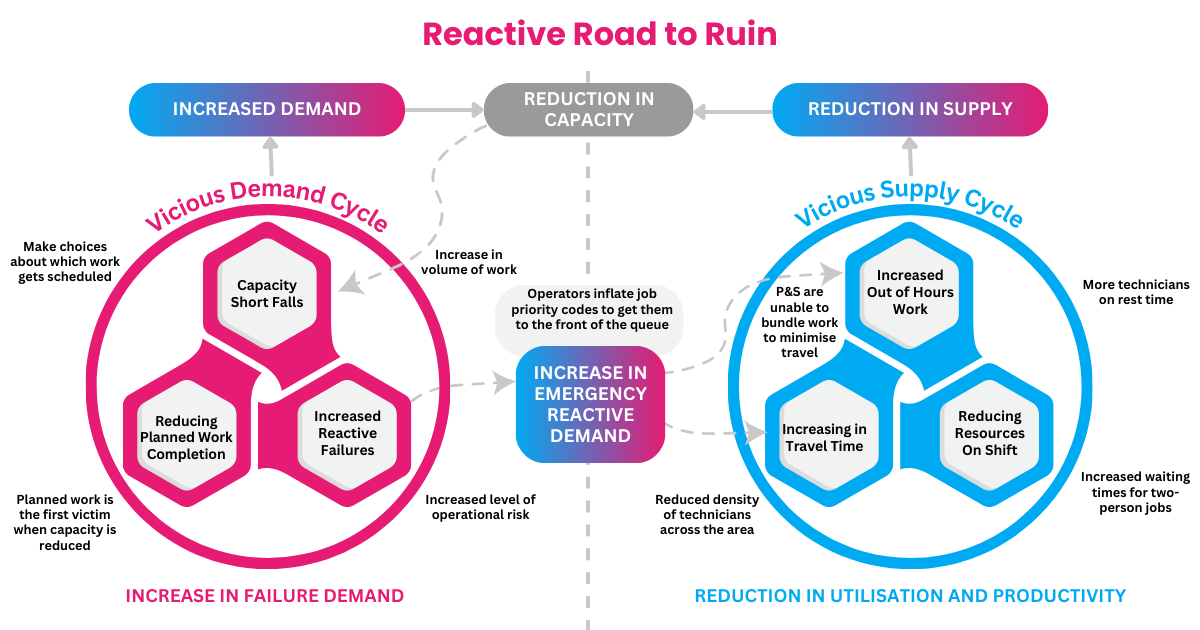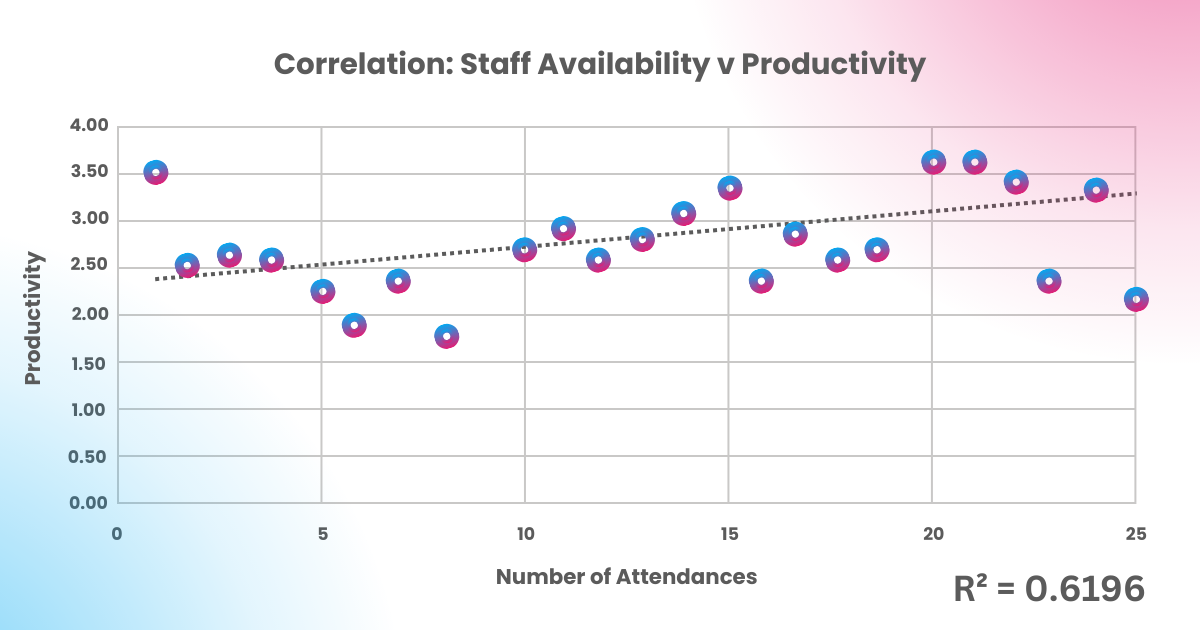(I Can’t Get No) Satisfaction
Have you ever wondered what it would be like to increase your maintenance capacity by 15-20%? Would you have a backlog of work? Would your sites have fewer failures?
Managing an operational team when you have many ageing assets (long-sweated assets and accrued maintenance debt) is a tough job, and it can feel like you can’t satisfy anyone.
- Your operational teams are frustrated by old assets failing and increasing risk.
- Maintenance teams feel like they are fighting a losing battle.
- Planners can’t see the wood from the trees in their growing backlogs.
So, everyone in the team is frustrated, your performance isn’t where you want it to be, and a growing backlog of jobs creates more risk. The answer is simple, right? We need more people to keep on top of the assets until they are replaced.
That may be what the team thinks, but times are increasingly challenging for utilities. So knocking on the CFO’s virtual door is more likely to result in a new ‘stretch budget’ than an additional headcount, so what can you do?
Most utilities operate with a backlog of jobs and accept that it’s the nature of running a legacy asset-intensive business. However, when there are maintenance backlogs, reactive work takes priority over planned jobs, and over time, assets begin to fail through lack of maintenance. This creates a classic vicious cycle or as we call it, the Reactive Road to Ruin, of increased asset failures, generating more reactive work and even less capacity for proactive maintenance.

Fighting Fire with Fire
At this stage, we are not managing the assets but simply reacting to them when they fail; it feels like firefighting. Teams often look to ‘Jobs Per Day’ (JPD) first; if we ‘crack the whip’ and get the team to work harder, we will clear the backlog, won’t we?
The simple answer is NO! It doesn’t work, and it’s never worked. Indeed, it may drive the wrong behaviour. If we schedule the simple jobs, we can increase JPD, and the critical and complex jobs fall to the back of the queue and risk increases.
Focusing on JPD only looks at the supply side of the equation; worse still, it only looks at a proxy indicator of productivity, which is one of many different attributes of the supply side of the equation.
We must burn down the backlog if we genuinely want to manage risk and, therefore, need to look at all the levers of capacity management.
Critically, we need to think about the issue differently. We need to address the lack of capacity caused by an imbalance between the volume of work (demand) and resources to complete it (supply).
Demand
In our experience, the demand side offers the greatest opportunity to create ‘balance’. Reactive jobs are often just accepted as a by-product of operating in an asset-intensive environment;- we must challenge this notion.
If we apply Lean principles and consider jobs in terms of Value or Waste, we see that not all jobs are equal. Let’s consider a job on an asset that we should be able to fix on the initial visit but has taken three visits. The initial visit can be seen as ‘value’, but the second and third visits are lean ‘waste’. We can reduce demand if we can understand and address the causes of not completing the work as optimally planned.
If we take a high-level look at the data, it is not unusual to find that 20-25% of the reactive workload is associated with multiple site visits (>5 site visits). Most of these jobs should have been completed before the fifth visit. Understanding your workload in more detail will help scale the opportunity to reduce systematic failure demand and create the capacity to reduce backlogs.
Supply
We must look more broadly than Job Per Day to increase the supply side. One of the areas utilities need to focus on is the active management of technicians ‘on the tools’ each day.
Teams must maximise the resources available each shift by:
- Managing staff release for training, meetings
- Managing vehicle maintenance schedules
- Controlling annual leave.
- Actively managing absence.
- Managing out of hours call outs.
Teams should have a target number of people on shift daily based on agreed assumptions and measure and manage the reasons for deviations. Far too often, we see managers ‘accepting’ the resources that arrive on shift.
Our analysis has shown a strong statistical correlation between the number of ‘attendances’ and JPD; the more people on shift, the higher JPD performance.

Only when we have maximised resources on shift can we focus on true productivity. Measuring productivity is an article in its own right and one we will return to in the future.
Creating Capacity
If we want to ‘take control’ of the work, we must create capacity by balancing supply and demand, pushing down demand by eliminating waste and elevating supply by maximising resource availability. Leaders need to ensure they and their teams have access to the right KPIs that make the critical drivers of capacity visible so teams can work on improving performance using continuous improvement techniques.
How are your teams looking to address their backlogs? Do your teams understand the different types of demand? Are they focused on reducing wasteful demand? Is there a focus on maximising resources ‘on the tools’ every day?
If you want to learn more about redressing the imbalance and how we demonstrate where you can create 15-20% additional capacity in 6 weeks, then please get in touch: dean.wheeler@reson8.group




